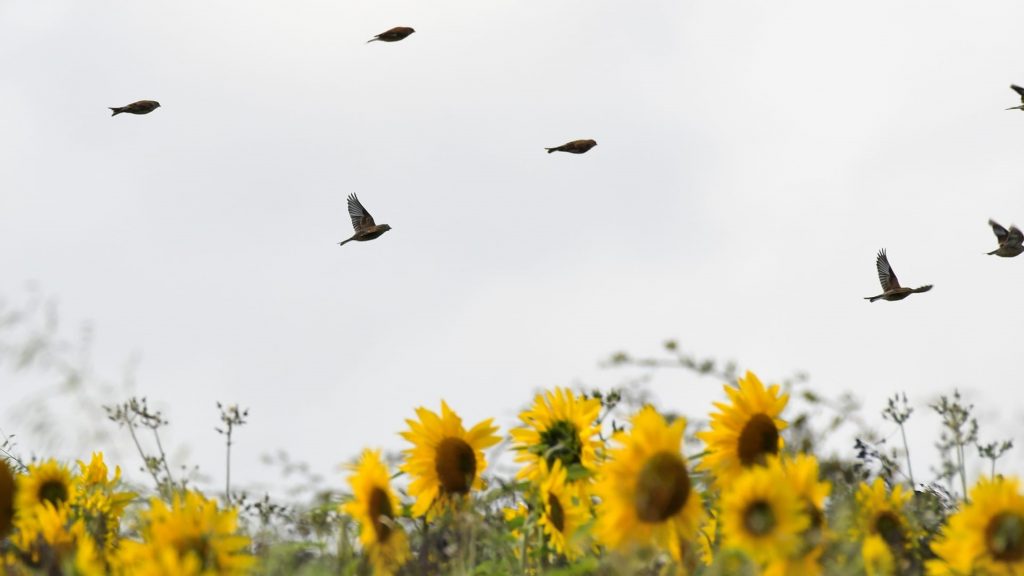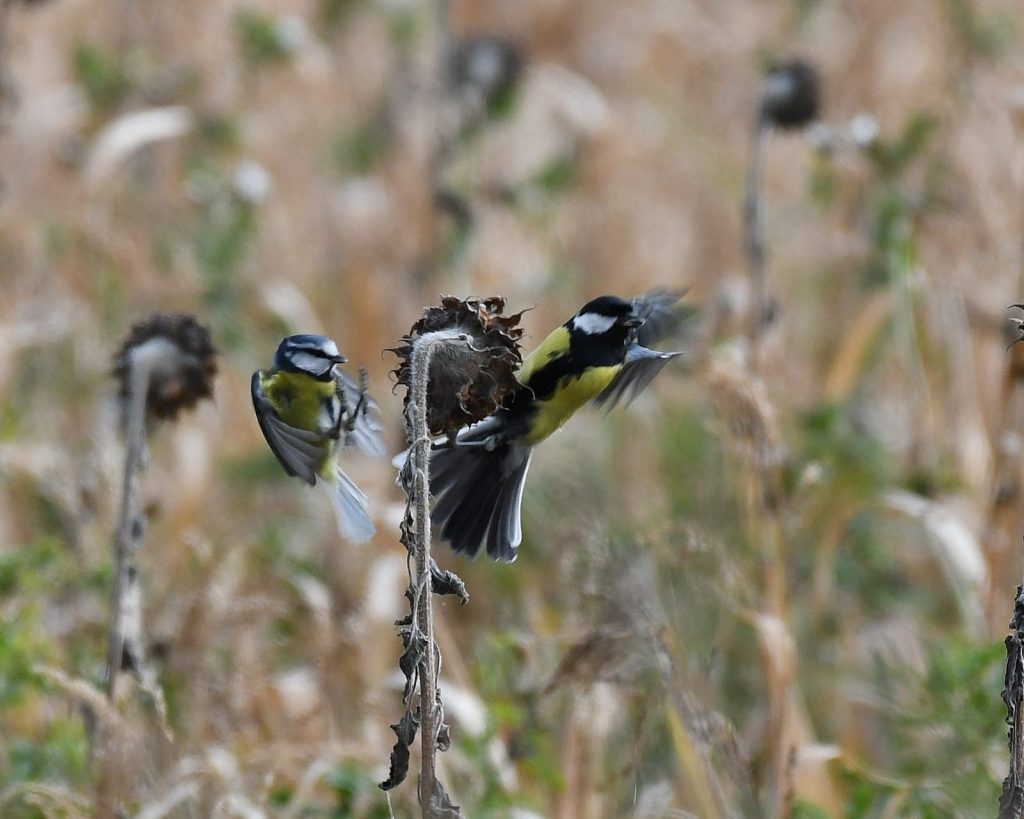With a dramatic decline in farmland bird populations since the mid 1970’s, it has been recognised on a national level that concerted efforts must be made to provide suitable habitats and feed sources through the hungry gap.
Case Study – Wild bird mix
Problem:
A decline in farmland birds and suitable habitats.
Solution:
Create suitable nesting habitats, shelters and feed sources through the hungry gap.


Works undertaken
We successfully applied for funding as part of a larger Mid-Tier Stewardship Agreement with Natural England for the creation of wild bird mix and provision of supplementary farmland bird feed. We selected a seed mix which provides a variety of seeds, supporting different birds throughout the winter.
Our seed mix included red and white millet, hybrid kale, sunflowers, triticale and fodder radish. We established a seed bed and drilled the wild bird mix in the spring, to ensure establishment over the summer months, resulting in a thick crop which provides shelter and carries a seed value into the winter months, through the hungry gap (November – end of April).
In addition to this, we will be feeding a mixture of triticale, wheat, oilseed rape, millet and linseed at fixed feeding stations next to the established wild bird mixes to buffer feed through the remainder of the hungry gap.
Having established suitable cover and feed, we have looked to introduce grey partridges to re-establish a viable population. Re-introducing grey partridges is an extremely challenging task and will take plenty of trials over the coming years.
Click here for further details about our Regenerative Agriculture services.
